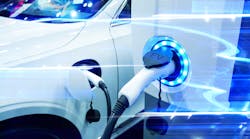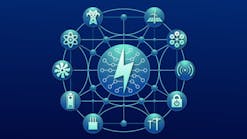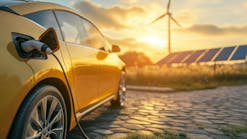Lately, it seems as if my mind has been playing a clever little trick on me.
Actually, it’s a well-known mental shortcut that many of us perhaps employ without even thinking about it. The psychological term for the shortcut is the “availability heuristic,” which, paraphrasing from psychology texts, generally means that the easier it is to bring something to mind, the more important that information will seem. Similar terms for this phenomenon might include a “recency bias” or the “frequency illusion.”
A real-world example that many of us can relate to is when you buy a new car and suddenly seem to notice every other car of that same make and model on the road. All over the road, in fact — you see your make and model (and even often same color!) of car, which you almost certainly would not have noticed a year ago or maybe even a month ago.
So this has been happening to me lately with electric vehicles (EVs). Not that I’ve bought one (yet), but ever since I took an assignment to research EVs for this magazine, I am suddenly noticing that EVs appear to be all the rage in the electric utility space today.
At the recent DistribuTECH in New Orleans, for instance, a walk down just about any aisle on the exhibit floor revealed vendors offering EV chargers, or at least distributed energy systems and platforms that factor in EV supply and demand. Numerous panels were convened on the planning for and/or deployment of EV programs at utilities.
Industry news is rife with stories of state de-carbonization efforts, announcements of dozens if not hundreds of new EV models being introduced by numerous auto manufacturers, advances in EV batteries as well as charging station (Electric Vehicle Supplemental Equipment, or EVSE) technology and deployments, and reports predicting that EVs could grow to up to 60 million vehicles on the road by 2040 (compared with only about 1 million today).
A recent SEPA — the Smart Electric Power Alliance — report forecast that while EVs today represent only a few terawatt-hours (TWh) of aggregate electric demand, that number could grow to at least 118 TWh and up to a staggering 733 TWh by 2030.
Intrigued by EVs, I booked a trip to Orlando, Florida, U.S., in January to rent an EV from Drive Electric Orlando. While that trip featured more internal-combustion engine driving than EV driving (a Chevy Volt with a 40-mile EV range was all that was available), from the very minute I set out in that Volt, my EV frequency illusion/availability heuristic kicked right back in.
Suddenly the road was filled with Chevy Volts, Teslas, other EVs and even a slew of hybrids. EV charging stations appeared (to my wandering eyes at least) where I had seen none before. Running an errand to a grocery store on a sub-zero Saturday morning in Minneapolis, I saw something I never thought I’d see — an otherwise barren parking lot with two EVs getting their charge on while the rest of the frozen city appeared to be huddled inside.
I now see EV chargers in the parking ramps of shopping malls, at outdoor arenas and parks, almost always at convention centers, and, as noted above, lining the aisles of trade shows such as DistribuTECH.
So is this just recency bias — the availability heuristic — or not? Perhaps only time will tell, per the reminder from a colleague on the eve of DistribuTECH that “EVs have been around since the late 1900s and every year I keep hearing they are The Next Big Thing.”
I will stop short — for now — of calling EVs the definitive “Next Big Thing,” but unless I’m being tricked by all the EVs and infrastructure that seem to suddenly be all around, EVs are at least a “smaller” big thing, and perhaps a very, very big thing indeed.
Perhaps better said, EVs might be seen as the tip of the spear of a set of game-changing technologies for the electric utility industry overall. After all, anything that might add a whopping 700 TWh of electric demand might well bring with it a sea change in the way that electricity is generated, distributed and served.
Our new section “Charging Ahead” will look at just that, as well as residential battery storage, distributed energy resources, all manner and forms of renewable and distributed energy, how artificial intelligence and machine learning are shaping distribution networks, even such things as the seemingly fanciful (for now) all-electric airliners EPRI is starting to talk about.
All of this calls for new ways of thinking about the electric utility of the future. Poles and wires, transformers and substations are here to stay — at least for the foreseeable future. At the same time, savvy utilities are charging ahead into the brave new world of transformational technologies that are likely to result in a more distributed, more mobile, more varied, and more customer-centric industry over time.
Are you ready to “Charge Ahead” together?


